This article was published in FrontPageMag on april 05, 2004, titled: Eurabia and Euro-Arab Antisemitism. It is becoming a historical document which outlines precisely how the Euro-Islamic Alliance cult is turning Europe into an Eurabia entity and laying the foundation for a new holocaust against the European Jews and, this time, against a national Jewish State as well: Israel. It was written by Bat Ye’or,who is considered an authority on “dhimmitude” in Islam and Islamic Antisemitism and has written numerous books about this subject.
By Bat Ye’or
Eurabia and Euro-Arab Antisemitism
“The largest group of the perpetrators of anti-Semitic activities appears to be young, disaffected white Europeans,” announced a summary released March 31, 2004 to the European Parliament from the report of the European Union’s racism and xenophobia monitoring center.1 This blatant denial of local Islamic extremism and Muslim perpetrators, as the primary source of Antisemitic actions in contemporary Western Europe, was predictable. The overt Antisemitic violence manifest in Europe over the past three years resulted from several decades of inculcation. Public denunciation by Christians and Jews of this poisonous Antisemitism forced reluctant European authorities, notably in France, to acknowledge its existence. Europe, so anxious to preach morality to Israel and the United States, suddenly stood accused of tolerating, even promoting unabashed, violent Antisemitism.
Although the vast majority of Europeans today are not Antisemitic or anti-Israeli, they are immersed in a culture of demonization of Israel, fomented by a European political entity in which nearly everything that is written and said on the Middle East conveys this anti-Israeli mentality. We can recognize in this contemporary phenomenon some aspects of the system of political, cultural, and moral conditioning that led to the Shoah. Reactivated during the past four decades, this Judeophobic conditioning, indirectly, and almost subliminally, is being implemented by the willing heirs of the genocidal fathers. They transmit and spread this Antisemitism in a new political and ideological construction, different from Nazism: the Euro-Arab war for the delegitimization and destruction of Israel.
Herein, I will give a brief outline of the Euro-Arab anti-Israeli policy:
1) the Project,
2) its institutional structure,
3) its modes of operation, and
4) its themes.
The new forms of global Judeophobia that grow and develop within this system, also have anti-Christian, anti-European, and anti-Western ramifications.
The Project
The Project is articulated around two entities: European and Arab.
The European policy
The Project is an enlarged vision of the anti-American Gaullist policy dependent upon the formation of a Euro-Arab Mediterranean rim hostile to American influence and penetration. The project facilitated European ambitions to:
1) play a defining political role in international relations in competition with the United States, and independent of its influence;
2) maintain important spheres of influence in the former European Arab colonies;
3) open huge markets for the European Economic Community’s products in the Arab world, especially in oil-producing countries;
4) secure supplies of petroleum and natural gas to Europe;
5) make the Mediterranean a Euro-Arab inland sea by encouraging massive Arab immigration into Europe, and favoring Muslim immigrants, mixing Euro-Arab populations by promoting multiculturalism with a strong Islamic presence in Europe;
6) develop a powerful Islamo-Christian symbiosis against Israel, orienting Europe toward Islam, and liberating Christianity from Judaism, which is viewed by some Antisemitic factions as the embodiment of evil.
To achieve these ambitions European countries had to operate as one entity. Therefore, the first step was the construction of a common foreign policy. Each nation would abandon its autonomous foreign policies and forge a joint Euro-Arab policy. France was a driving force in this unification, which had already been envisaged by General de Gaulle’s inner circle and Arab politicians, including the former Mufti of Jerusalem, and Nazi-collaborator, Haj Amin al-Husseini.2
In the 1960s, nostalgic Nazi and fascist Antisemitic groups began strengthening ties with Arab countries engaged in bellicose actions to eliminate Israel. This pan-European and anti-American movement formed the nucleus of a European solidarity with Palestinian Arabs that became more assertive after 1967. It included fascist movements such as Jeune Europe, EuropaFront and Europe Réelle, the National Socialist Movement in England, the C. E. Carlberg Foundation in Stockholm, as well as centers in Malmö, Sweden, and other European cities, such as Strasbourg, Vienna, and Lausanne.
The 1973 oil crisis gave France and Germany a pretext to base the integrated Euro-Arab policy on the danger of an energy shortage, which they used to 1) forge a shared European energy policy on petroleum and 2) cement the European Community’s alliance with the Arab League countries in a common anti-American, anti-Israeli policy. Thus, the French-German duo used the 1973 oil crisis to justify their political reversal. The most tangible and immediate consequence of this alliance between the nine European Community countries and the 22 Arab League countries was the isolation and demonization of Israel.
Arab policy
The Arab States demanded from Europe:
1) alignment with their anti-Israeli policy;
2) modernization of their countries;
3) access to Western science and technology;
4) European political independence from the United States, and separation of the two blocks;
5) measures favorable to Arab immigration and dissemination of Arab and Islamic culture in Europe.
Commitments between the two parties were made with the Déclaration des Neuf sur le Moyen-Orient on 6 November 1973 in Brussels and the Summit of the Arab conference in Algeria for the Arab party on 28 November 1973. For the first time the European Nine adopted the French interpretation of UN Resolution 242 as establishing Israel’s borders on the 1949 armistice line, and including Palestinian rights in all Middle East peace negotiations.
These points were confirmed by the Déclaration des Neuf in London in 1977 and that same year at the UN in New York by the president in exercise of the Council of Europe, Henri Simonet, and again in the Venice Declaration in 1980. Other European Community more severe declarations would follow.
Institutional Structure
Clearly, a project that was so compromising for Europe could not be set forth in written documents and treaties; the Europeans chose the formula of “dialogue.” An institutional structure was devised to study all relevant questions, give directives, and design programs. All meetings, committees, and working groups included representatives from European Community nations and the European Council along with members from Arab countries and the Arab League. Proceedings and decisions took place in closed sessions, with no official minutes. Sessions were jointly directed by two presidents, one European and the other Arab. This complicated structure implemented a policy of Euro-Arab association defined at the highest levels by the European Community and member States, hidden behind the inoffensive name, “Dialogue.”
The Euro-Arab Dialogue (EAD) is a political, economic, and cultural institution designed to ensure perfect cohesion between the two parties. Its structure was set up at Conferences in Copenhagen (15 December 1973), and Paris (31 July 1974). Ongoing operations are handled by various organs that define working themes and impose policy decisions made by the General Commission. The principal agent of this policy is the European Parliamentary Association for Euro-Arab Cooperation, founded in 1974. The Association, which represents several hundred parliamentarians from all European parties, works to promote Arab interests and demands within each European party and Parliament, and in the European Council. The Association pressured European governments to adopt measures of exclusion and economic and academic boycotts of Israel. It is a powerful instrument of Arabic lobbying against Israel. The other principal organs of the Dialogue are the MEDEA Institute, the European Institute of Research on Mediterranean and Euro-Arab Cooperation created in 1995 with the backing of the European Commission, and the MEDA program that manages substantial European funds allocated to Arab countries.
Modes of operation
Together these associations, committees and subcommittees ensure perfect coordination between the two parties in the political, economic, and cultural domains. In the political domain, the European Community stands apart from the United States by consistently backing Arab claims, and Palestinian policies, and stubbornly insisting on Arafat as the unique and exclusive representative of the Palestinians. European emissaries of the Dialogue have tried to bring the American government into line with Arab anti-Israeli positions.
The cultural committees formed Euro-Arab associations between universities, students, publishers, media syndicates including the press, television, radio, the arts, cinema, and NGOs. Exchange programs were organized for students and professors. At various symposia – like the Symposium of Venice (1977) or the Hamburg Symposium (1983) – decisions were made to promote the study and dissemination of Islam and the Arab language and civilization in European schools, universities and Euro-Arab cultural centers established throughout Europe. At the opening session in the Venice University’s great audience hall in Cà Dolphin, several personalities gave welcome speeches – including Ambassador Cesare Regard, the Italian representative to the European Group of coordination for the Euro-Arab Dialogue. The participants in this Seminar unanimously forward recommendations for consideration by the governments of the member states of the European Community and the League of Arab States, including:
1. Coordination of the efforts made by the Arab countries to spread the Arabic language and culture in Europe and to find the appropriate form of cooperation among the Arab institutions that operate in this field.
2. Creation of joint Euro-Arab Cultural Centers in European capitals which will undertake the diffusion of the Arabic language and culture.
3. Encouragement of European institutions either at University level or other levels that are concerned with the teaching of the Arabic language and the diffusion of Arabic and Islamic culture.
4. Support of joint projects for cooperation between European and Arab institutions in the field of linguistic research and the teaching of the Arabic language to Europeans.
5. Necessity of supplying European institutions and universities with Arab teachers specialized in teaching Arabic to Europeans.
6. Necessity, when teaching Arabic, of emphasizing Arab-Islamic culture and contemporary Arab issues.
7. Necessity of cooperation between European and Arab specialists in order to present an objective picture of Arab-Islamic civilization and contemporary Arab issues to students and to the educated public in Europe which could attract Europeans to Arabic studies.
These decisions were furthered in the Recommendations adopted by the Parliamentary Assembly of the Council of Europe in 1991. Arab and Islamic anti-Israeli propaganda, barely disguised in academic and cultural packaging, was disseminated by organs of the EAD operating under the highest State authorities and imposed in universities, the press, and cultural centers. Dissidents, whether in religious, political or cultural circles, were marginalized or reduced to silence. These measures accompanied the influx of Arab immigration promoted as privileged and priority source of population growth in Europe.
Within this Europe transformed into a Euro-Arab continent hostile to the United States and Israel, transnational, transcontinental Judeophobia is structured in the fusion of two hatreds – European Antisemitism, and Arab-Muslim Judeophobia. This incendiary mixture formed the two pillars of the Euro-Arab alliance against both Israel and the United States. The dialogue committees condition European mentalities to the new cult of Palestinism. This ideology of hate melds Christian and Islamic Judeophobia, including the principles of replacement theology, expressed as both Christian, and finally Islamic supersessionism against Israel, which is condemned to disappear.
Themes
The themes of hatred that flourish in the fusion of Euro-Arab cultures on both shores of the Mediterranean were probably studied within these EAD committees and disseminated worldwide, since they are founded in Europe as well as the Arab world, and particularly among the Palestinians who cement this Christian-Muslim symbiosis against Israel. They are enunciated in common EAD declarations issued jointly by the European and the Arab parties associated at the highest state level in the EAD. The committees function under the strict authority of European Foreign Affairs ministers and heads of state, and European Council delegates, together with their colleagues on the Arab side.
The political themes include:
1. recognition of the Palestinians as a people; up to 1973 they had been known as Arab refugees;
2. recognition of the PLO and its leader Arafat as unique representative of the Palestinians;
3. obligation for Israel to negotiate exclusively with Arafat;
4. a global and not a separate peace;
5. retreat of Israel to the1949 armistice lines;
6. Arab-Islamic sovereignty in Jerusalem;
7. European pressure on the United States to align with their Arab policy;
8. demonization of Israel, a danger for world peace;
9. moralization of the Palestinian jihad as a just war against the injustice of Israel’s existence;
10. placing the Palestinian problem at the center of international politics.
11. delegitimization of Israel with all the negative characteristics that follow.
All of these themes, none of which are found in the 1967 UN Security Council Resolution Number 242, were developed by the European Community in crescendo from 1973 to 1980. Europe spoke incessantly for the “legitimate inalienable rights of the Palestinians.” This phrase, borrowed from Arab League declarations, is repeated in every few lines of European statements mimicking their Arab models. We would seek in vain the definition of the rights of Kurds, Berbers, Copts or any other pre-Islamic indigenous inhabitants of the Middle East, including Jews- these peoples are never mentioned. The EAD committees imposed on Europe the cult of Palestinity based on the demonization and delegitimization of Israel, whose usurped history and identity are projected onto the Palestinians. Traditional European Antisemitism and Islamic jihad are fused within the structures and geopolitics of Euro-Arabism; in this process, European anti-Americanism and Judeophobia come together within the Euro-Arab ideology. The Arab genocidal policy, which benefits from European Union support, guidance, and financing, is an international geostrategic force. Today we must abandon the usual framework of traditional Antisemitism and study Judeophobia in this new Euro-Arab context.
On January 31, 2001, with the recrudescence of Palestinian terrorist jihad, European Foreign Affairs Commissioner Chris Patten declared to the European Parliament that Europe’s foreign policy should give special attention to its southern flank (the Arab countries, in EU jargon), adding that he was delighted by the general agreement to give greater visibility to the Mediterranean Partnership. How should his words be interpreted? Suddenly the diffuse Israelophobia in the media, the universities, and policy declarations reached a paroxysm in harmony with the Arab world. Europe was inflamed with the cult of Palestinity and its frantic hatred of Israel in the press, media, and universities. This Judeophobic prejudice reminiscent of the 1930s, encouraged Palestinian terrorism in Israel and attacks against Jews in Europe, revealing that Antisemitic networks exist which can be activated or repressed by governments. The aim of this paroxysm of Judeophobia was to use terror and intimidation to detach Diaspora Jews from the State of Israel, leaving Israel even more isolated.
The Euro-Arab Dialogue comprises many different aspects and determines complex policies with respect to the United States, Europe, Israel and Arab countries. Europe’s hidden war against Israel is wrapped in the Palestinian flag, and is part of a global movement that is transforming Europe into a new continent of dhimmitude within a worldwide strategy of jihad and da’wa, the latter being the pacific method of Islamization. The implementation program of this policy of dhimmitude for the Euro-Arabian continent is set forth in the Rapport du Comité des Sages submitted to European Commission president Romano Prodi in October 2003. This program, entitled “Dialogue between Peoples and Cultures in the Euro-Mediterranean region” was accepted by the European Union in December 2003. Unfortunately, the policy of “Dialogue” with the Arab League nations, willfully pursued by Europe for the past three decades, has promoted European dhimmitude and rabid Judeophobia.
Translated from the French by Nidra Poller, and presented, in part, at The World Conference on Global Antisemitism, Montreal, Canada March 15, 2004.
Notes:
1. The Council of Ministers established the European Monitoring Centre on racism and xenophobia (EUMC) in Vienna in June 1997 as part of a coordinated action to develop a policy to combat racism and xenophobia. This included the declaration of 1997 as the European Year against Racism. On 12 and 13 December 2003, the representatives of the Member States meeting in Brussels within the European Council decided to extend the remit of the European Monitoring Centre on Racism and Xenophobia, in order to convert it into the European Union Agency for Fundamental Rights (FRA). It was established by Council Regulation (EC) No 168/2007 of 15 February 2007 as the successor to the European Monitoring Centre on Racism and Xenophobia (EUMC).
2. Henry Laurent, “Le Mufti et la France de la IVe République”, in Revue d’Etudes Palestiniennes, Paris, automn 2001, n° 81:.70-87; Lukacs Hirszowicz, The Third Reich and the Arab East, London: Routledge & Kegan Paul/Toronto: University of Toronto Press, 1966; Zvi Elpeleg, The Grand Mufti Haj Amin al-Husseini, Founder of the Palestinian National Movement, London/Portland, OR, 1993.
About the Author:
Bat Ye’or (Hebrew: בת יאור, meaning “daughter of the Nile”); a pseudonym of Gisèle Littman, née Orebi, an Egyptian-born British scholar, who writes about the history of non-Muslims in the Middle East, and in particular the history of Christian and Jewish dhimmis living under Islamic governments.
She is the author of eight books, including Eurabia: The Euro-Arab Axis (2005), Islam and Dhimmitude: Where Civilizations Collide (2001), The Decline of Eastern Christianity: From Jihad to Dhimmitude (1996), and The Dhimmi: Jews and Christians Under Islam (1985).
She has provided briefings to the United Nations and the U.S. Congress and has given talks at major universities such as Georgetown, Brown, Yale, Brandeis, and Columbia.



 RSS
RSS

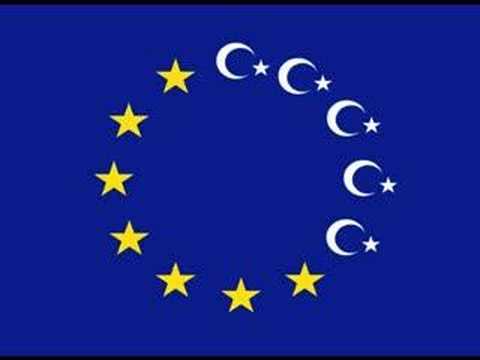
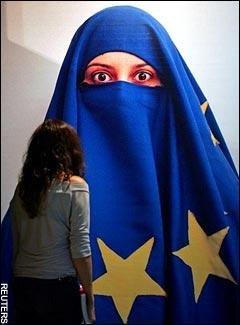

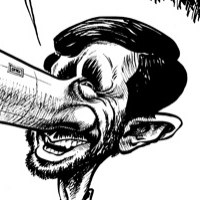
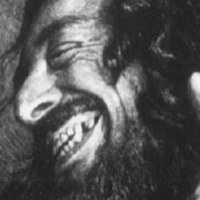


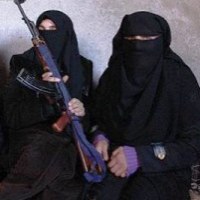









Eurabia and why europe hates its Jews again #israel #jcot #antisemitism #islam #tcot http://j.mp/bGnVBA
RT @CrethiPlethi: Eurabia and why europe hates its Jews again #israel #jcot #antisemitism #islam #tcot http://j.mp/bGnVBA
Eurabia and Why Europe Hates its Jews Again Antisemitism, the Arab-Israeli conflict and Islam: http://bit.ly/9geGiE via @addthis
[…] of Europe Commission against Racism and Intolerance (ECRI) demonstrate. These warning signals …Eurabia and Why Europe Hates its Jews Again | Middle East …On 12 and 13 December 2003, the representatives of the Member States meeting in Brussels within the […]